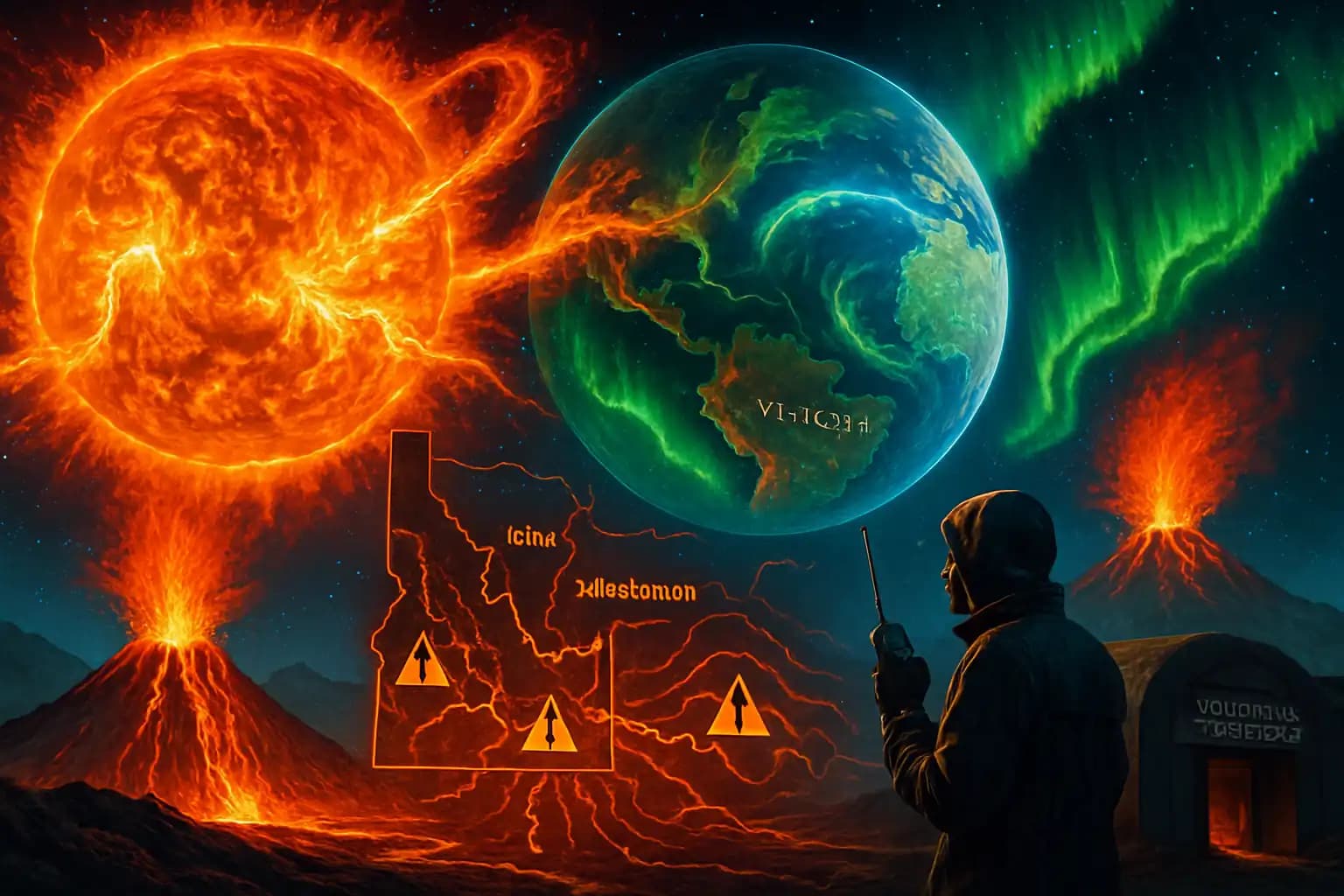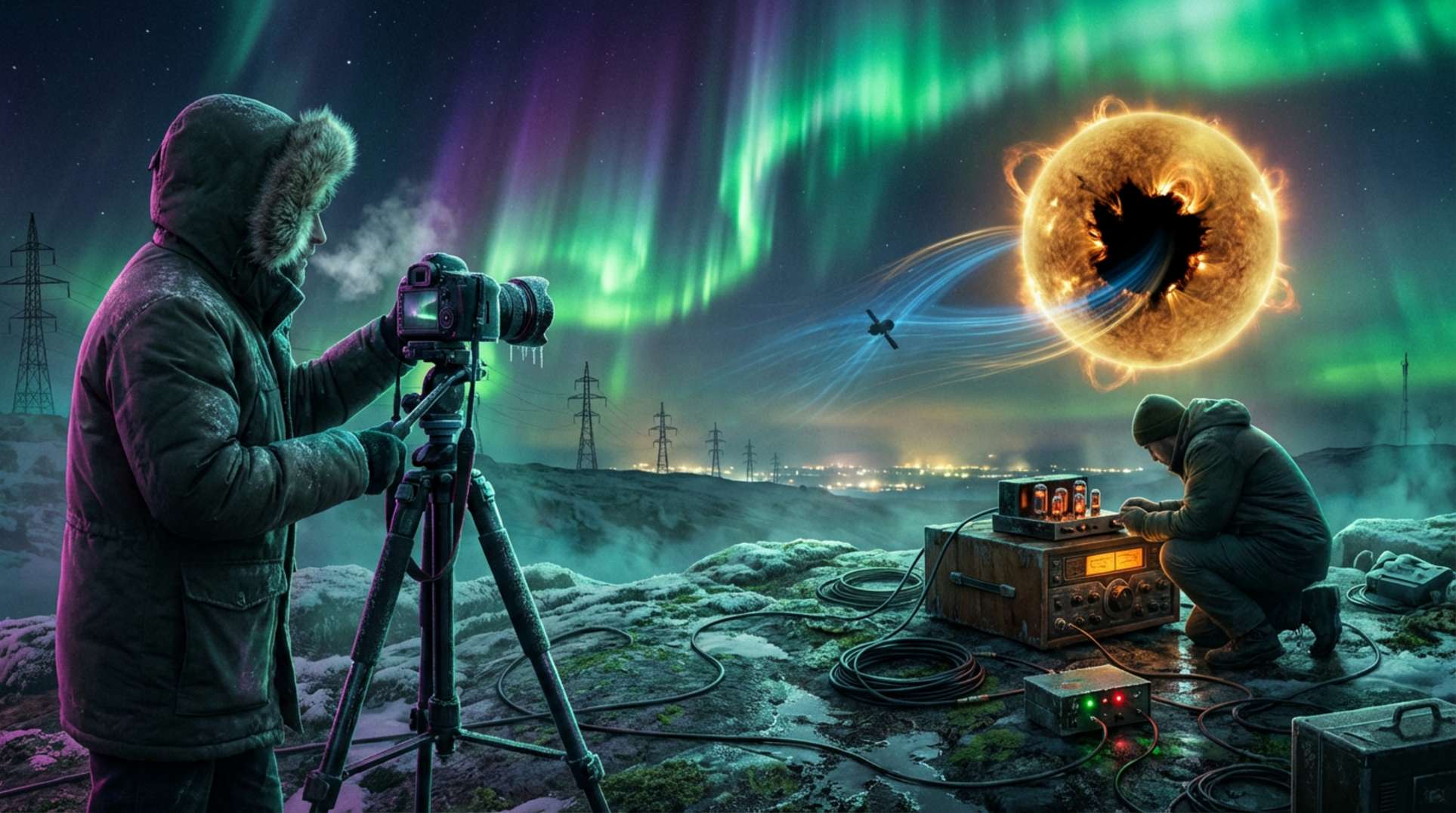The sky has dazzled disaster enthusiasts: green auroras over the Rockies, rising electromagnetic static, and increased global volcanic unrest. In this volatile atmosphere, Fuego in Guatemala and Kilauea in Hawaii erupted, Mt. Etna unleashed a fierce pyroclastic flow, and earthquakes rattled Idaho near Yellowstone. With Solar Cycle 25 peaking and fresh space weather incoming, all eyes nervously scan the sky—then quickly glance down at the trembling ground.
The sequence of cosmic and terrestrial chaos is alarmingly tight. The recent G4 geostorm wasn’t just a spectacle for aurora fans—it coincided with an eruption surge and the kind of Idaho quake cluster that fuels conspiracy theories. Reports like the Mt. Etna geomagnetic risk analysis and investigations into the Idaho–Yellowstone supervolcano swarm stir both scientific interest and doomsday fears.
Geomagnetic Storms: The Sun’s Fury Unleashed
Geomagnetic storms occur when plasma ejected by the Sun strikes Earth’s magnetic field, distorting it and showering our planet with charged particles. Intense storms, like the recent G4, can disrupt electrical systems, increase radiation hazards, and create surreal auroras. Historically, civilization has experienced these storms through events like the 1859 Carrington Event, yet the idea that they can disrupt tectonic forces remains debatable. Despite skepticism, clusters of eruptions and earthquake swarms following major storms are difficult to ignore.
Fact or fiction, these patterns are alarming enough to inspire projects like this geophysical warning report and trigger heightened volcanic alerts after significant solar events. As the Sun reaches maximum activity, scientists and conspiracy theorists speculate: Are we at the mercy of cosmic whims, or are we merely observing a natural cycle coinciding with solar phenomena?
Yellowstone and Idaho: Earthquake Swarms and Volcanic Anxiety
The Idaho earthquake swarm west of Yellowstone, detailed in this USGS update, has ignited fascination and concern. Earthquake swarms here are common—Yellowstone has 700 to 3,000 quakes annually—but the current swarms, aligning with severe space weather, fuel suspicion among those wary of coincidences. Minor shocks in succession typically indicate fluid and magma movement deep underground, emphasizing that we live above a simmering supervolcano. Many scientists dismiss direct links between solar storms and seismic activity, but when clusters occur after cosmic events, skepticism grows.
As latest eruption coverage shows, every new swarm in this area ignites paranoia and triggers dramatic predictions. If you live near Yellowstone and a bright aurora lights the night sky, checking your go-bag “just in case” seems prudent.
Solar Cycle 25: Maximum Sun, Maximum Danger?
Solar Cycle 25 promised to be dynamic. Solar maximum is already unleashing flares and geomagnetic disturbances reminiscent of the most vigorous cycles on record. Researchers explore weak yet intriguing patterns linking solar peaks to eruptions and earthquakes. While the debate continues, these patterns receive significant attention in both peer-reviewed studies and alternative discussions. Reports like near-Earth explosion warnings and predictions of planetary disruptions reflect the anxieties surrounding these rare solar peaks.
Proposed mechanisms suggest geomagnetic energy might induce currents in Earth’s crust, impacting stress on tectonic faults and volcanic pathways—especially when already “primed.” Nonetheless, most seismic and volcanic activity stems from slow geological processes within Earth itself (earthquake basics), not merely solar activity. Still, experts hesitate to declare absolute certainty.
Watchfulness or Hysteria? Navigating Real Risk in a Solar-Torqued World
In an era of constant updates and instant doomsday forecasts, distinguishing real risks from hysteria proves challenging. After each geomagnetic event, alerts surge across earthquake-prone zones and volcanic hotspots, from Yellowstone to Sicily and the Pacific Ring of Fire. There is merit to caution: preparedness for the unexpected is prudent (and highly marketable for prepper kits and doomsday podcasts). For every calm voice discounting links between solar activity and seismic events, there are just as many who insist correlation signifies a cosmic message.
Whether it’s cautious vigilance or pure cosmic chance, this week’s eruptions symbolize a real-time exploration of science (and myth). For relentless investigation—free from tinfoil hats but grounded in skepticism—tune into Unexplained.co. Stay alert, maintain your supplies, and remember: you’re not paranoid if they’re genuinely after you—or if the Sun itself seems to have a vendetta against us.





